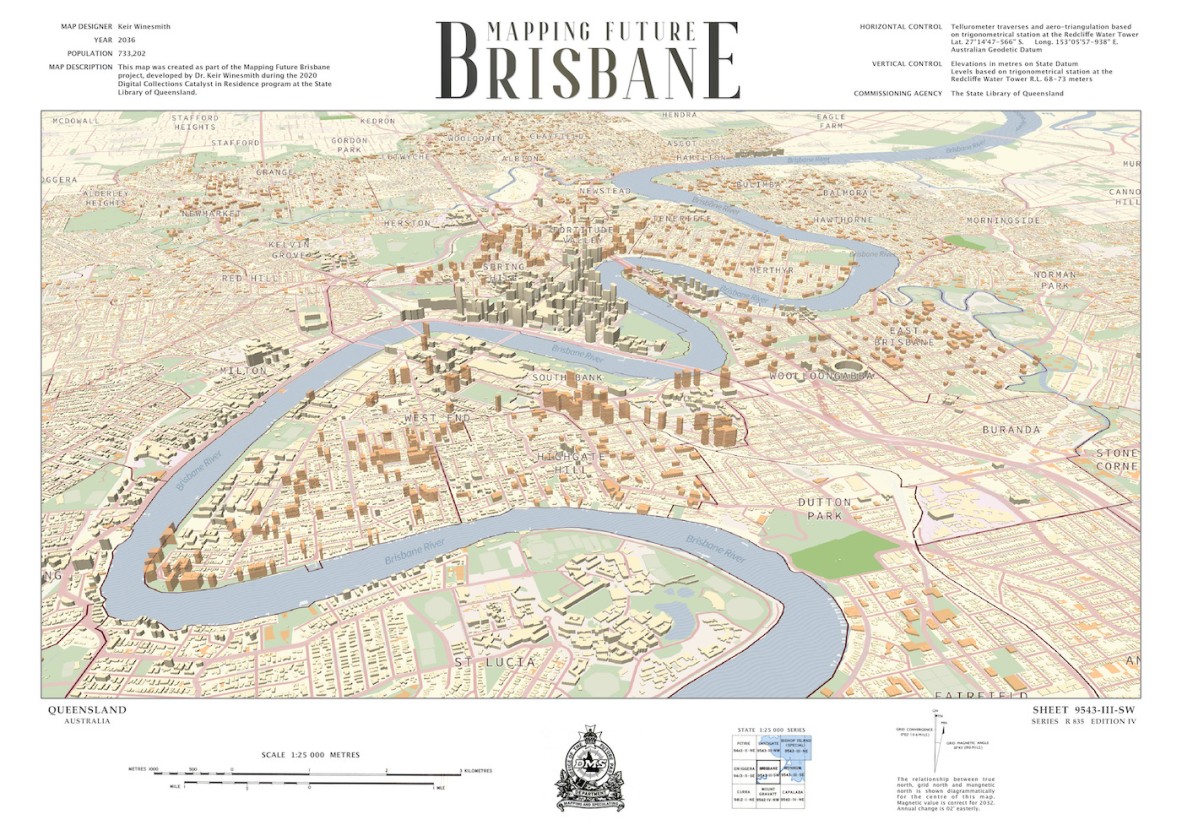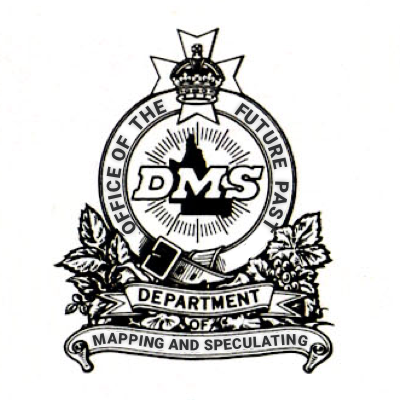- Home
- About the Project
/
About the Project
In early 2020, the State Library of Queensland put out a call for innovative and creative uses of our collections through a new initiative - the Digital Collections Catalyst in Residence. Dr. Keir Winesmith was successful with his proposal to use State Library's historic map collections to create machine learning models that visualise different possible futures for the city.
By Dr. Keir Winesmith, Digital Collections Catalyst 2020
Home | Making Maps with Machines | Old Windmill Tower | Create Your Own Map
Mapping Future Brisbane was developed by me, Dr. Keir Winesmith, as part of the State Library of Queensland’s Digital Collections Catalyst residency program.
I began this research into post-colonial Brisbane’s urban story by looking at hundreds (maybe thousands) of maps. You can read my findings from that research and analysis of Brisbane’s patterns of mapping, new development and urban renewal. Following my initial research, which included talking to urban designers, place-making experts, historians, artists, and academics, I developed the plan that became this project. I’ve documented that process on the Library’s blog.
The final project is in three parts:
- A research and discovery process which described three waves of mapping, development and renewal of Brisbane - the 1880 & 90s, the 1970s & 80s, and today.
- A generative, machine learning experiment with the Library’s collection of maps of Brisbane, and maps of Queensland from the Museum of Lands, Mapping and Surveying, as documented in Making Maps with Machines.
- And an interactive map co-developed with the technology company Giraffe that you can use to create your own vision of Brisbane in 2036, which is available online.
I would like to thank the team at the library, especially Rachel Merrick, Anne Raunik and Vicki McDonald. Also Mankit Au, Jenni Edwards, Robyn Hamilton, Daniel Cavanagh, Caroline Crowther, Carreen Dunbar, Catherine Cottle, Leif Ekstrom, Josie Huang, Gavin Bannerman and Louise Denoon.
A massive thanks to those who shared maps and ideas, especially Ray Kerkhove, Kaye Nardella and Malcolm Middleton and the team at the Queensland Government Architect. And to Annabel and Andrew at AX Interactive for the image editing and pre-processing software used as part of the machine learning experiments.
Thanks also to Rodney Turner, Megan Cope, Carol McGregor, Martin Disley, Cristina Napoleone, Olivia Kelly, Tooey Elliott, Simon Elliott, Ann McLean and Jesse McNicoll for talking through potential ideas with me.
A big thanks to the team at the Brisbane City Council, especially Wilson Lowe, Sarah Leach, Greg Elphinston and Dylan Zhao.
Thanks to Rob Asher, Mike Asher and Hank Haeusler at Giraffe for making the 2036 Brisbane interactive map possible.
A massive thanks to the State Library of Queensland for offering such a cool residency, and for accepting this strange proposal.
And mostly, thanks to the locals I met and spoke to while walking around Mianjin/Meanjin, Binbilla, Wilwinpa and Tumamun to the north and Cumbukiepa, Kuilpa, Walon-koppa and Corella to the south. You really guided this project.


About the Digital Collections Catalyst
- Dr. Keir Winesmith is the inaugural Digital Collections Catalyst for 2020. He has worked at the intersection of digital, culture and place for the last two decades. Keir created and collaborated on immersive and interactive cultural experiences in Australia, the U.S. and Europe, and in 2018 was named in Fast Company's '100 Most Creative in Business' for his work in this area. He currently leads a small strategic design agency and is an Adjunct Professor at UNSW Art & Design.
- State Library created the Digital Collections Catalyst initiative for developers and creatives to support innovative and creative uses of our digital collections and collections data. We are interested in highly creative and experimental ideas that bring together technology with cultural heritage to inspire Queenslanders through State Library collections. Learn more about the Digital Collection Catalyst initiative here.